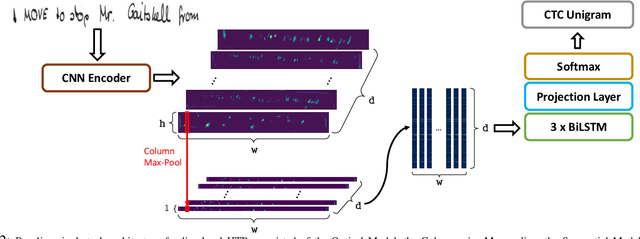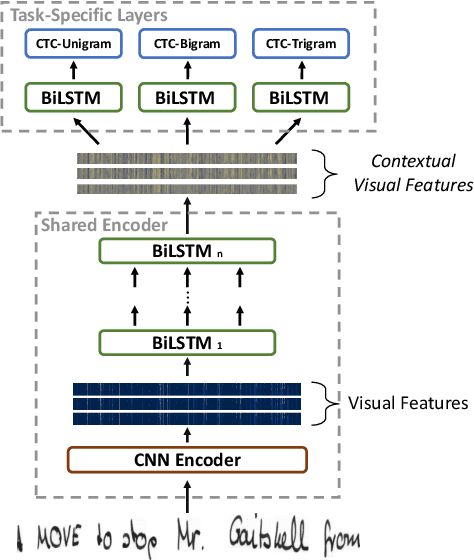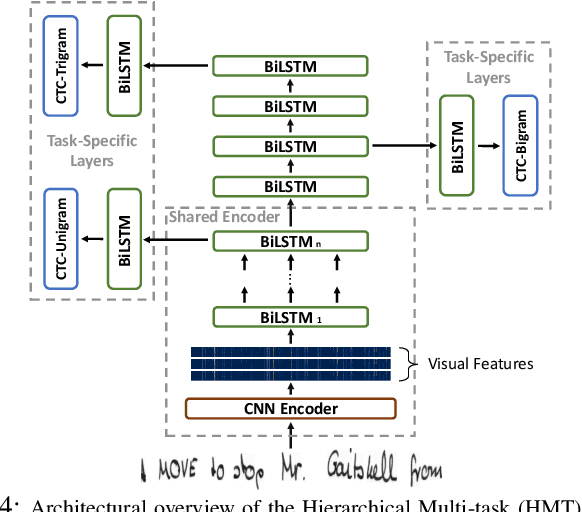Enhancing Handwritten Text Recognition with N-gram sequence decomposition and Multitask Learning
Paper and Code
Dec 28, 2020



Current state-of-the-art approaches in the field of Handwritten Text Recognition are predominately single task with unigram, character level target units. In our work, we utilize a Multi-task Learning scheme, training the model to perform decompositions of the target sequence with target units of different granularity, from fine to coarse. We consider this method as a way to utilize n-gram information, implicitly, in the training process, while the final recognition is performed using only the unigram output. % in order to highlight the difference of the internal Unigram decoding of such a multi-task approach highlights the capability of the learned internal representations, imposed by the different n-grams at the training step. We select n-grams as our target units and we experiment from unigrams to fourgrams, namely subword level granularities. These multiple decompositions are learned from the network with task-specific CTC losses. Concerning network architectures, we propose two alternatives, namely the Hierarchical and the Block Multi-task. Overall, our proposed model, even though evaluated only on the unigram task, outperforms its counterpart single-task by absolute 2.52\% WER and 1.02\% CER, in the greedy decoding, without any computational overhead during inference, hinting towards successfully imposing an implicit language model.
 Add to Chrome
Add to Chrome Add to Firefox
Add to Firefox Add to Edge
Add to Edge